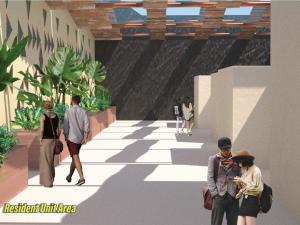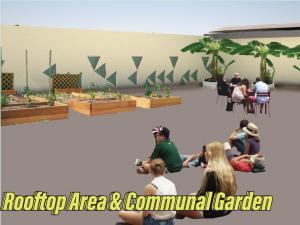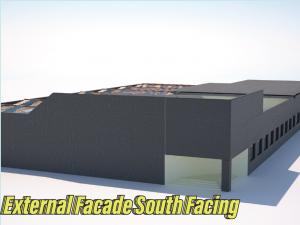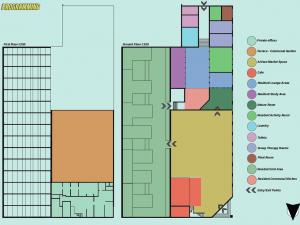Students design humanitarian architectural solutions: Katherine Queen
Bachelor of Architectural Design students are designing housing solutions for neurodiversity, cultural and social differences.

When the pandemic arrived in 2020, Humanitarian Architecture Travelling Studio course coordinators Dr Amit Srivastava and Associate Professor Peter Scriver found new ways to continue to offer a cultural and humanitarian design experience to their students but on a local level.
The newly South Australian focussed course saw students designing and developing responses for South Australians at risk of homelessness, and responding to needs of different local sub-cultures and neurodiversity in collaboration with local partners like HYPA and TACSI.
Master of Architecture student Katherine Queen took part in the design studio in 2020 as part of her Bachelor of Architectural Design. Heavily involved as a leader within ECMS societies, and president of the Adelaide University Society of Architecture and Built Environment, she said that choosing to complete her masters at the University of Adelaide was one of the best choices she’s made.
“I’m really happy about the connections I’ve made here, as well as the environment where I get to learn,” she said.
Katherine’s design response for the 2020 Humanitarian Architecture Travelling Studio repurposed an old warehouse in the Adelaide CBD as a residence for people experiencing homelessness and mental illness.
The site would not only be used as a shelter for the residents, but also has space for an artisan marketplace and café to help the building fund itself and allow the residents to express themselves. With space for a communal garden and leisure area, as well as lots of natural light, the residence will be calming and therapeutic for residents.Katherine Queen
Check out Katherine’s poster and concept below.
Let’s get to know Katherine Queen
Why did you choose a Bachelor of Architectural Design?
I was drawn to the built environment and it's all encompassing and intrinsic part of our life.
I like being able to design places that people will use on a personal level, with little things like the placement of a door, or the light switch or window can change the entire space and feeling of a building.
Architecture has a great power that comes with it and I find that it's been something that felt like the most natural pathway for me.
What was your favourite/most important learning or experience from taking part in the HATS design studio?
Probably the research that was involved with creating these designs. The entire process that we went through to get to where we had these designs involved a lot of research and investigation. I was also really passionate about how this type of architecture and design thinking can potentially help people and it really changed my views on how I personally address architecture.
I also found it really exciting to talk to and visit some of the companies that are directly involved in this type of work.
What are your future career goals once you are qualified?
I hope to one day be an architect, that's what I'm pushing myself towards at the moment, but I also hope to one day open my own firm. I also want to help people and create an environment that benefits people from all walks of life. I would love to be involved in these types of changes in the world, and help people who are struggling themselves. I feel like it's important for us as designers to learn about the world and look at creating designs that benefit the people around us.
Thank you to Katherine and to Dr Amit Srivastava and Associate Professor Peter Scriver, HATS course coordinators.




